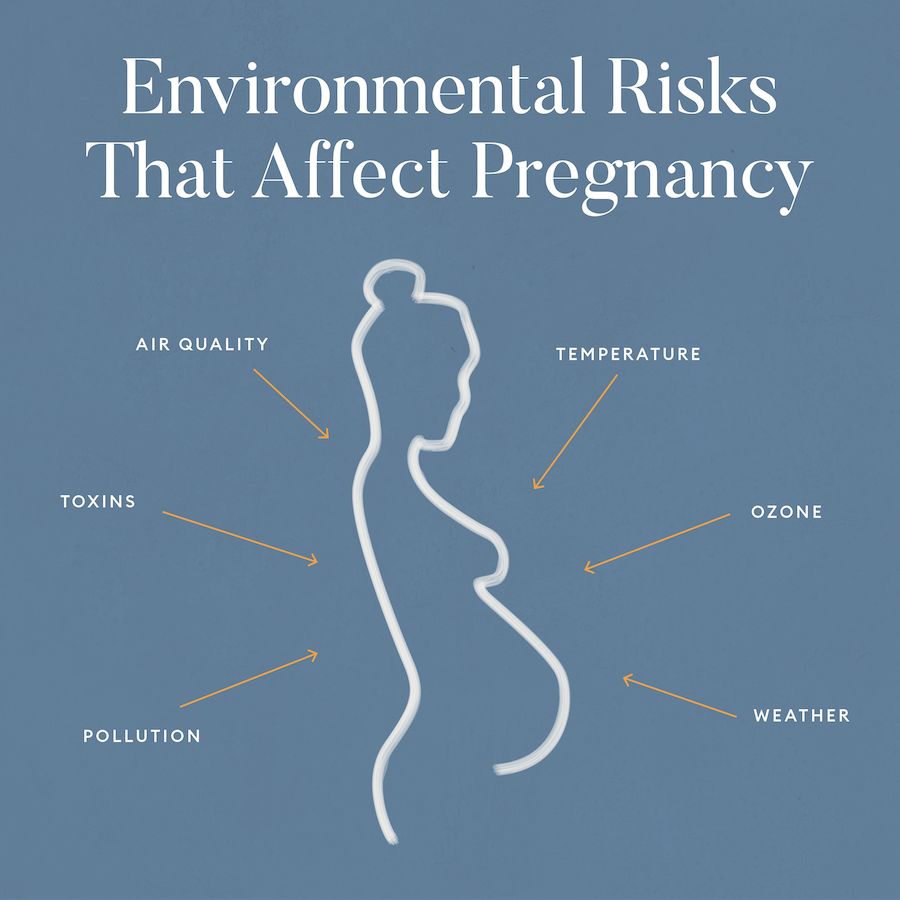With the physiological and hormonal changes that come with pregnancy, pregnant women face many new challenges with their health. That’s why routine appointments, screenings, blood tests and ultrasounds are done throughout every trimester until birth.
For instance, genetic screenings scan for mutations in your DNA, which could make your baby more prone to developing certain health conditions. And urine analyses check for glucose and protein, which can indicate gestational diabetes and preeclampsia. But oftentimes, little attention is given to the environmental risk factors that affect pregnant women.
“Women generally have healthy pregnancies, but growing research shows that climate change can create or worsen environmental hazards that threaten the health of pregnant women and increase health risks for the baby, such as low birth weight or preterm birth,” says former Parsley clinician Elizabeth Milbank, MD, MPH, a board-certified preventive medicine and lifestyle medicine physician. “A growing body of research has demonstrated a link between pregnant women exposed to high temperatures or air pollution and babies, who are premature, underweight or stillborn.”

The environmental risk factors of pregnancy
A recent systematic review in JAMA Network Open outlines the latest research that links air pollution and heat exposure related to climate change with preterm birth, low birth weight and stillbirth. The review of 57 studies found that low birth weight may be associated with fetal exposure to air pollutants, as well as inflammation from oxidative stress and altered heart and lung functions in mothers.
“Climate change worsens air quality because warming temperatures make it easier for ground-level ozone to form, and we know that exposure to two types of pollution: smoke (ozone) and tiny particles called PM 2.5 are associated with preterm birth, low birth weight, and stillbirth,” Dr. Milbank says.
FYI, ozone is a highly reactive gas that is both natural and man-made and occurs in the Earth’s upper and lower atmospheres, according to the Environmental Protection Agency. While ozone absorbs UV light and helps reduce your exposure to the sun’s harmful UV rays, when ozone is inhaled, it can pose health risks, specifically respiratory issues. These negative health effects include inflammation in the airways, cough, throat irritation, chest tightness, and shortness of breath. And when breathing is hindered, it can negatively affect pregnant women, who may already have shortness of breath due to hormonal changes.
Research has also shown that heat exposure can impair fetal growth by reducing uterine blood flow and may also contribute to prematurity from dehydration, according to an August 2017 study in theInternational Journal of Environmental Research and Public Health.
In addition, Dr. Milbank says that severe weather events, like wildfires, heat waves, and hurricanes can expose pregnant women to environmental hazards. “Wildfires increase the amount of pollution, dust, and smoke in the air. Extreme heat events can lead to dehydration and kidney failure in pregnancy, which by extension, can affect the baby’s growth and development,” Dr. Milbank says.
Moreover, hurricanes and floods can damage homes and communities, increasing exposure to toxins and mold and diarrheal illness from contaminated water and food supply. In fact, 2007 research published in Maternal and Child Health Journalfound that approximately 56,000 pregnant women and 75,000 infants were directly affected by Hurricane Katrina in 2005, cutting off their access to clean water, safe food, and proper healthcare. It also exposed them to environmental toxins, such as carbon monoxide from improper use of devices powered by liquid fuels and natural gas.
This has led to pregnancy complications, like intrauterine growth restriction and decreased birth weight. Research from this study has also shown that women living in regions affected by hurricanes are at greater risk of not being able to breastfeed their baby or shortening their breastfeeding period compared to other women.

